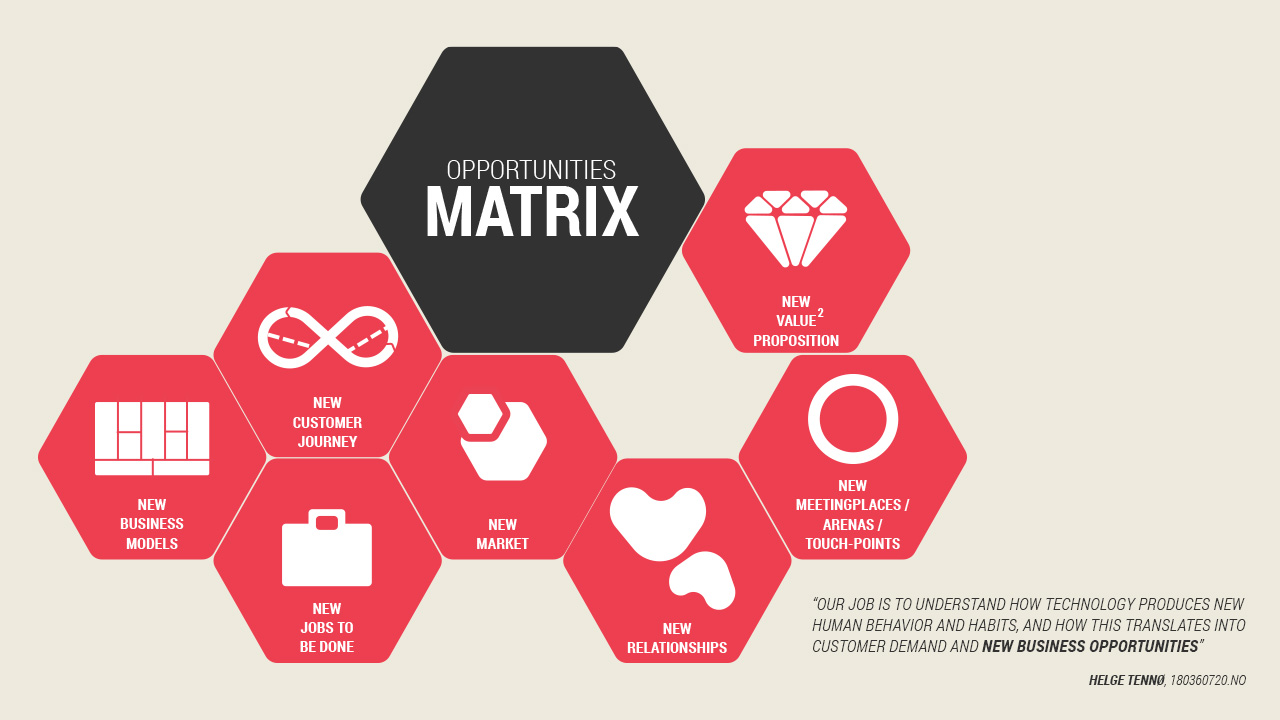By downplaying technology’s role in shaping businesses and industries, companies make themselves vulnerable to emerging threats.
- In this article I try to combine the nature of technology, as I understand it from reading amongst others K.Kelly, and technology’s role in disruptive innovation, as I understand C.Christensen.
Technology pushes two things: (and we have to understand technology in a larger perspective – as big as the alphabet, science, communication and as small as shoes, chairs or Bluetooth etc.):
- Change in peoples habits and behaviors
- Disruptive business ideas and business models
Incumbent companies serve a need / behavior and perform sustained innovation in order to continuously accommodate the market (sustained, means that they innovate within the same framework as the original product). This satisfies current customers and is a safe position for companies to take / have – as few companies manage to throw of an incumbent at the incumbent’s own game.
Disruption happens when a firm uses technology in a new way and manages to offer customers relevant value outside the current comfort zone and abilities of the established players.
- A common example is how the Ford Motor Company managed to accommodate a customer demand (cheaper cars) which the current car industry was unable to produce / offer, and they did it by applying new ideas and technology for its systems of production.
Other, more current examples are booksellers, airlines and travel, banks and finance, media, hotels, education, insurance and electrical providers (just disrupted or about to be disrupted).
Disruption is a very hot topic today because we are at a time when technology is infiltrating industries core infrastructure and value propositions. The cloud / connected internet, mobile, participation etc. proposes in a lot of cases such a radically different way of offering or thinking about an offering that disruption is often more than ripe – just waiting to get plucked by small companies, sometimes even unconsciously, digging at an industry from the bottom (which is the trademark of disruption – “it’s not the one you see that kills you”)
.
- “The innovators who create products at ‘hackathons’ aren’t even trying to disrupt your business. You’re just collateral damage” – Larry Downes and Paul F. Nunes, Big Bang Disruption, HBR March 2013
Unfortunately, even if most companies today use the Internet I suggest they are mostly doing it to replicate existing infrastructure (many company websites are digital copies of existing content or services already rendered by Customer Service) – companies are not imaginative enough to see how the technology enables them to think differently about their offering, relationship, market, business model etc.:
- “The only thing keeping most big companies from creating new categories is their lack of imagination – their inability to see beyond what they’re selling today”. – Eddie Yoon and Linda Deeken, Why It Pays To Be A Category Creator, HBR, March 2013
The Opportunities Matrix offers some ideas to where new opportunities arise as technology enables new human behavior or habits – offering new opportunities for business.
We have found that one of the biggest pitfalls of using technology in the quest for new business advantage is not understanding the difference between copying old infrastructure (efficiency innovations) and creating a completely new offering (empowering/transformational innovation) – most companies today are in the business of the former, and happily / protectively accommodating current shareholders by doing so.
Why is disruptive innovation important? Most companies thrive by incrementally upgrading their existing offering and keeping all competition at bay. This is true, generally speaking an estimate 70% of current return on shareholder value will most likely be the result of incremental innovation (efficiency or sustaining), but if we look at companies future income, and if we look at where they will most likely be disrupted, it is through the innovative use of technology – seeing new needs and new customer demands and working hard at accommodating it.
This (a company’s future income) is why disruption – and imagination, might be the most important investments companies look into in these times of great technological opportunity
• Grade as low, intermediate or high risk using simple criteria in Table V generic viagra • Lifestyle and psychosocial factors.
.
Now what they need are better, and faster tools for seeing, and acting, on those opportunities. And that is what we (our industry) are / and should be working on right now – that is our value proposition.



Hi Helge,
Great article!
I always like to read your posts and check out your presentations.
But afterwards, i always think: ‘Now what?’
How can i ACT on the great ideas and philosophies you’re sharing?
Do you have some thoughts on that?
Greetings,
Stephan